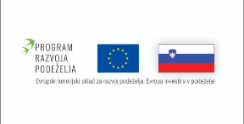Churches and chapels
A small cemetery church of Sv. Martin in Domanjševci is considered to be the oldest preserved sacral monument in Prekmurje, built before the middle of the 13th century. An extraordinary monument of the Romanesque architecture and Gothic painting is also the rotunda in the village Selo, built in the middle of the 13th century. The echoes of Gothic building practices that indicate churches in Goričko from 15th and 16th centuries, can be seen in the churches Grad, Gornji Petrovci in Boreča. After Gothic period was Turkish invasions which also threatened this part for two hundred years, from the 15th to the 17th centuries. At that time population of Goričko defended their land, afterward the development reached squares and others cities out of Goričko region. At the end of the 19th century the city of Murska Sobota experienced urban growth.
Best recognisability and the development represents the time after 1919, when the Prekmurje and Goričko was reunited with its motherland Slovenia.
Most visitors attract the biggest castle in Slovenia castle Grad with renovated castle chapel and the Parish Church of our Lord ̕s Ascension in Bogojina.








